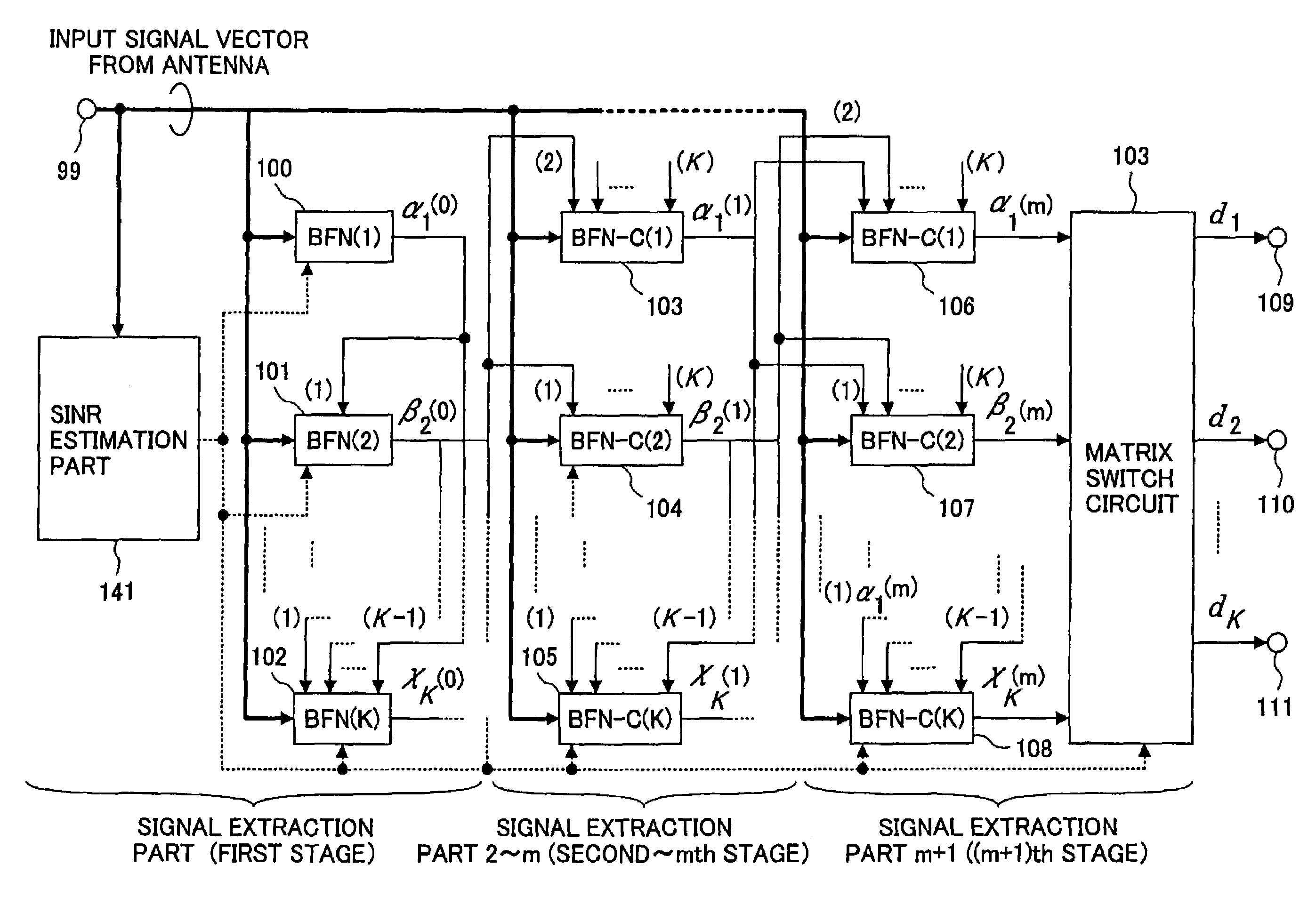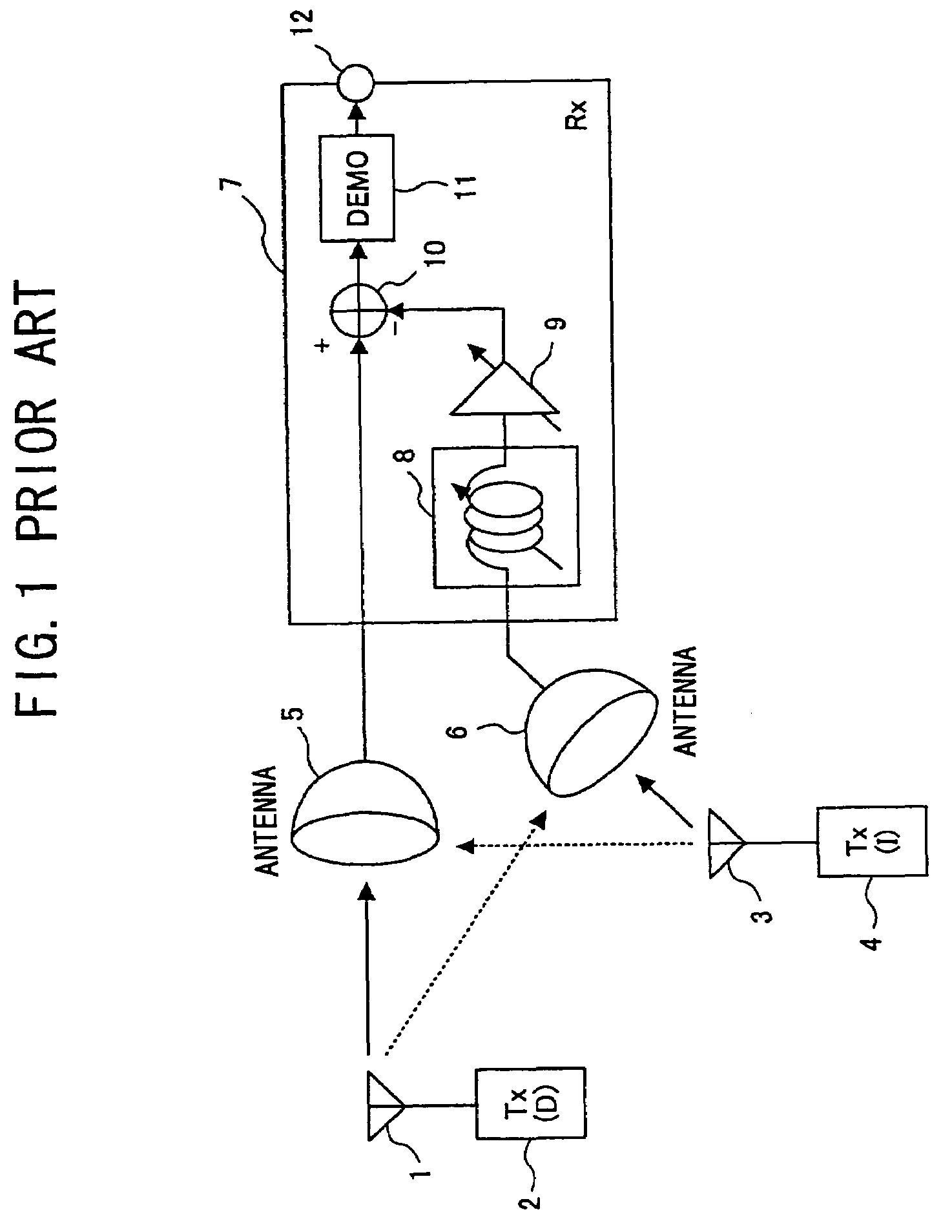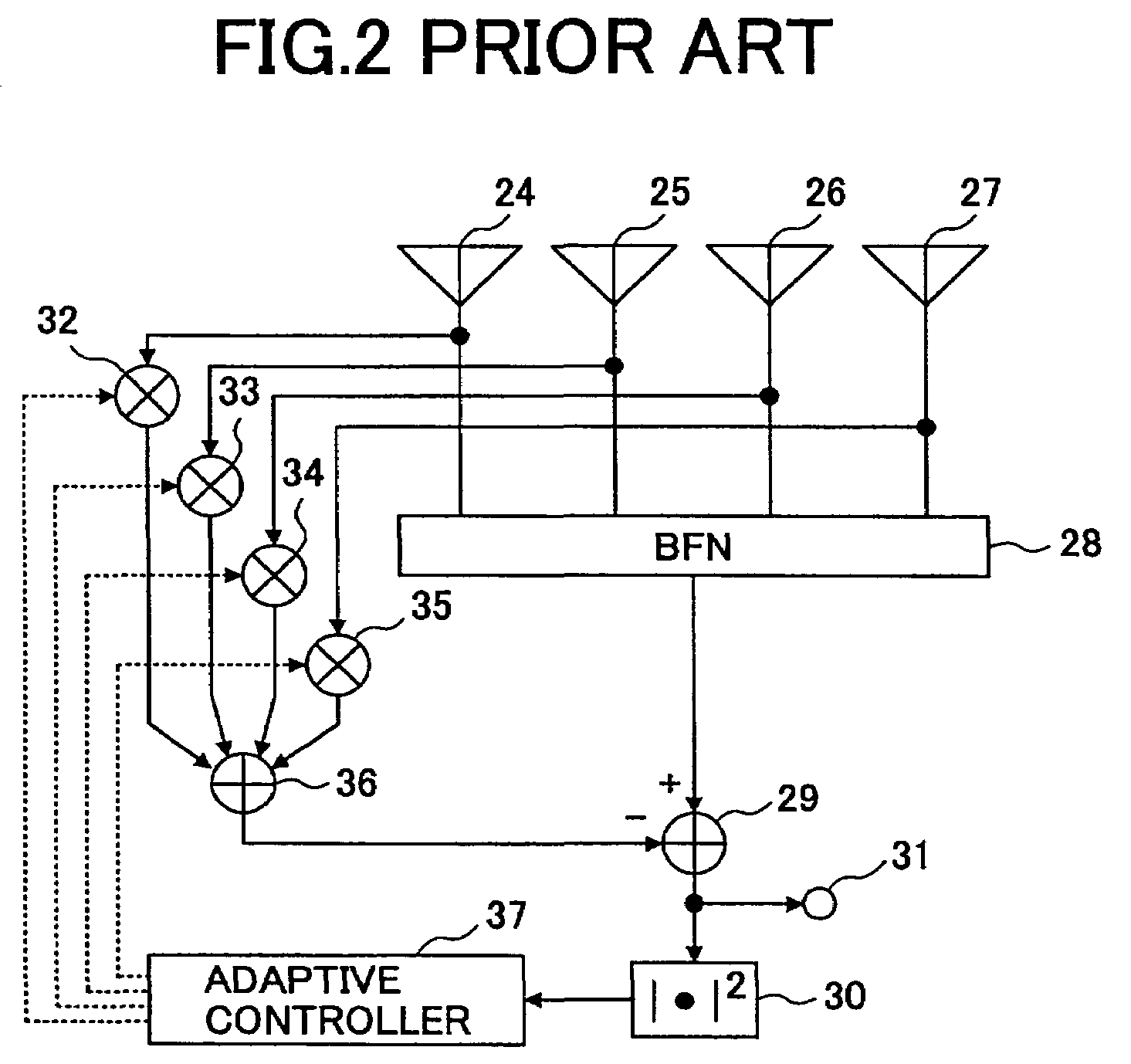Signal extraction method and apparatus in wireless communication system
- Summary
- Abstract
- Description
- Claims
- Application Information
AI Technical Summary
Benefits of technology
Problems solved by technology
Method used
Image
Examples
first embodiment
[0098]The signal extraction apparatus 400 is configured as shown in FIG. 6 for example. FIG. 6 shows the present invention.
[0099]In FIG. 6, the signal extraction apparatus 400 includes an input terminal 112 which receives signals from every element of the array antenna, beam forming networks (which will be called as BFN) 113–115 and antenna output terminals 116–118.
[0100]In the following, the operation of the signal extraction apparatus 400 will be described with reference to FIG. 6 and a flowchart in FIG. 7.
[0101]In the signal extraction apparatus 400, first, received signals received by every element of the array antenna are input to each BFN 113–115 (step 100). When the first BFN(1) 113 receives the received signals, the first BFN(1) 113 assigns weights to the received signals and adds weighted received signals so that a signal d1 is extracted, and outputs the signal d1 to the second BFN(2) 114 (step 101).
[0102]In the second BFN(2) 114, the second BFN(2) 114 assigns weights to th...
second embodiment
[0104]The above-mentioned signal extraction apparatus 400 can be configured as shown in FIG. 8 as a
[0105]In FIG. 8, the signal extraction apparatus 400 includes an input terminal 119 which receives signals from all array antennas, an SINR estimation part 120 which estimates SINR of a signal output from each SINR, BFN(1) 121–BFN(K) 124, a matrix switch circuit 125, antenna output terminals 126–128.
[0106]Each of the BFN(1) 121–BFN(K) 124 synthesizes signals received by each array antenna weight assigning weight to each of the signals and add the weighted signals, so as to extract a signal α1, β1, . . . , χK which is the desired wave or the interference wave.
[0107]The SINR estimation part 120 estimates SINR of output of each BFN 121–124, judges from which BNF signal should be extracted first, and generates estimation information for sorting the BFNs in descending order of SINR. In addition, the SINR estimation part 120 outputs the estimation information to each BFN 121–124 and the matr...
third embodiment
[0156]In addition, the signal extraction apparatus 400 can be configured as shown in FIG. 13 which shows a
[0157]As shown in FIG. 13, the signal extraction apparatus 400 includes an input terminal 99 which receives signals from all elements of the array antenna, an SINR estimation part141 which estimates SINR of each output signal, BFNs 100–108, a matrix switch circuit 142, and output terminals 109–111. The BFNs 100–102 correspond to a first stage signal extraction part 1, the BFNs 103–105 correspond to signal extraction parts after the second stage (from second to mth stage), the BFNs 106˜108 corresponds to the final stage (m+1)th stage.
[0158]In the following, the operation of the signal extraction apparatus 400 will be described with reference to FIG. 13 and a flowchart (FIG. 14).
[0159]The signal extraction apparatus 400 extracts signals β2(0)−χK(0) by performing the same process as the signal extraction apparatus shown in FIG. 8 (step 201). The extracted signals β2(0)−χK(0) are in...
PUM
 Login to View More
Login to View More Abstract
Description
Claims
Application Information
 Login to View More
Login to View More - R&D
- Intellectual Property
- Life Sciences
- Materials
- Tech Scout
- Unparalleled Data Quality
- Higher Quality Content
- 60% Fewer Hallucinations
Browse by: Latest US Patents, China's latest patents, Technical Efficacy Thesaurus, Application Domain, Technology Topic, Popular Technical Reports.
© 2025 PatSnap. All rights reserved.Legal|Privacy policy|Modern Slavery Act Transparency Statement|Sitemap|About US| Contact US: help@patsnap.com



